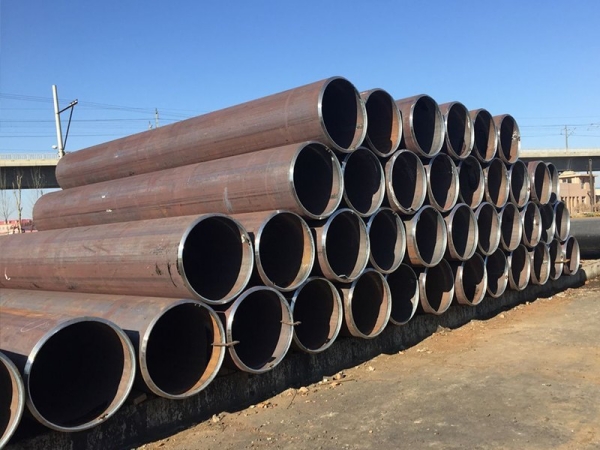Longitudinal Submerged Arc Welded (LSAW) steel pipes are subject to thermal deformation during the welding process. Thermal deformation can result in shape distortions, residual stresses, and other issues if not properly controlled. To manage thermal deformation in LSAW steel pipe production, several methods are used.

Pre-bending:
Pre-bending the steel plates before welding is a common practice to counteract the anticipated deformation. The plates are bent to the desired radius before they are welded into a pipe, which helps compensate for the post-welding expansion and contraction.
Internal and External Clamping:
Internal and external clamping devices are used to maintain the shape and dimensions of the pipe during welding. These clamps hold the pipe in place and apply the necessary pressure to prevent deformation as the welding heat affects the material.
Control of Heat Input:
Controlling the heat input during the welding process is crucial. Excessive heat can lead to more significant thermal deformation. By carefully regulating the heat input, it is possible to reduce the extent of thermal distortion.
Controlled Cooling:
Controlled cooling methods, such as the use of water spray or other cooling devices, can be applied to reduce the rate of temperature change during and after welding. Slow and controlled cooling can minimize the risk of distortion.
Weld Sequence:
The sequence in which the welds are applied can impact thermal deformation. Proper sequencing can help balance the forces generated during welding, reducing distortion. Welding in segments rather than continuously can also help manage thermal effects.
Stress Relief Heat Treatment:
After welding, stress relief heat treatment may be applied to reduce residual stresses and distortion. The process involves heating the pipe to a specific temperature and then slowly cooling it to relax internal stresses. This can improve the overall straightness and dimensional stability of the pipe.
Monitoring and Measurement:
Continuous monitoring and measurement of the pipe's geometry and alignment during the welding process are critical. This allows for real-time adjustments to be made to mitigate deformation.
Finite Element Analysis (FEA):
FEA is a computer simulation technique that can be used to predict and analyze the thermal deformation of LSAW pipes. It helps engineers understand how the material will behave during welding and how to minimize distortion.
Material Selection:
Choosing materials with lower coefficients of thermal expansion can help reduce thermal deformation. The material's properties can play a significant role in how much it deforms under the influence of heat.
Controlling thermal deformation in LSAW steel pipe production is essential to ensure the pipes meet dimensional and quality standards. The specific methods employed will depend on the pipe's dimensions, material properties, welding processes, and other factors. Proper planning, monitoring, and quality control are key to managing thermal deformation effectively.